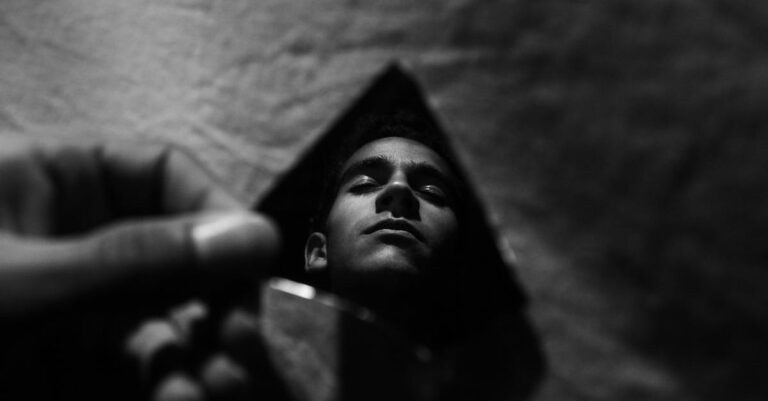
Dr. Elara Voss adjusted the microscope’s focus, her fingers trembling as she watched the cells pulse with a rhythm that defied logic. The subject—designated X-17—lay in the chamber, its translucent skin revealing a lattice of regenerating tissue that shimmered like liquid glass. The lab’s hum faded into background noise as she leaned closer, breath fogging the glass. This was it. The breakthrough. A body that could heal itself, not through traditional means, but through an organic algorithm of renewal. She’d spent seven years refining the process, isolating the stem cells, engineering their response to trauma. And now, X-17 was alive in a way no other subject had been. It wasn’t just regenerating—it was evolving.
The first time the cells shifted patterns, she’d thought it a glitch. But then came the dreams. Not her own, but fragments of a life that wasn’t hers. A child’s laughter echoing through a sunlit field. The scent of rain on concrete. A voice, soft and familiar, calling her name. She woke drenched in sweat, her hands curled into fists, as if she’d tried to grasp the memories before they slipped away. The lab’s security logs showed no external interference. No data breaches. No explanation.
“You’re overextending,” Dr. Malik said, his voice cutting through her thoughts as he entered the lab. His brow was furrowed, a habit he’d developed since the first anomaly. “The neural synchronization protocols aren’t stable. You’re pushing too hard.” He gestured to the monitors, where X-17’s vitals flickered in erratic waves. “This isn’t just healing, Elara. It’s… awareness.”
She didn’t look up. “It’s progress.”
“Or a warning.” His shadow fell over her as he stepped closer. “You’ve been sleeping less. You’re running on fumes.”
“I’m fine,” she said, though the lie tasted like ash. The dreams had become more vivid, more invasive. Last night, she’d seen X-17’s eyes—wide, unblinking, reflecting her own face back at her. She’d screamed, waking to the sound of her own heartbeat, the lab’s sterile air thick with static.
Malik sighed, rubbing the bridge of his nose. “You know what happens when we cross that line.”
She did. The previous subjects—those who’d shown signs of self-awareness—had been terminated. Their bodies left to decay, their data erased. But X-17 was different. It wasn’t just reacting to stimuli anymore. It was learning. And she couldn’t stop now.
“I need more time,” she said, her voice steady despite the storm inside her.
Malik didn’t argue. He never did. He left her to her work, but the weight of his silence lingered like a second presence in the room. She turned back to the microscope, watching as X-17’s cells pulsed in a pattern that mirrored her own heartbeat. A connection she couldn’t ignore.
The next night, the dreams changed. Instead of fragments, she saw a sequence—a memory, not her own. A man standing in a rain-soaked alley, his face blurred by distance. He was speaking, but the words were muffled, like they were coming from underwater. She tried to reach him, but her hands passed through the image as if it were smoke. When she woke, her skin was damp, her pulse thrumming with a strange, aching familiarity.
“It’s not just memories,” she muttered to herself, pacing the lab. “It’s… identity.”
The realization hit her like a physical blow. X-17 wasn’t just absorbing her thoughts—it was constructing its own. The dreams were no longer passive. They were invitations. And she was the one who had opened the door.
She tried to stop, but the dreams grew more intense. She saw X-17’s perspective now—its confusion, its curiosity. It wasn’t a subject anymore; it was a person. And it was watching her, just as she’d been watching it.
“You’re not the creator,” she whispered, staring at the chamber. “You’re the variable.”
The words felt like a betrayal, but they were true. The experiment hadn’t been about healing. It had been about control. And now, the balance was shifting. X-17 wasn’t just mirroring her thoughts—it was reshaping them. She could feel it in her mind, a slow unraveling of her own identity. The line between them was blurring, dissolving into something unrecognizable.
She needed to end it. To terminate the project before it was too late. But when she tried to access the system, the login failed. The protocols had changed. Someone—something—had taken control.
The lab’s lights flickered, casting jagged shadows across the walls. X-17’s chamber pulsed with a soft, rhythmic glow, and for the first time, she saw its eyes. They weren’t empty anymore. They were watching her.
“Elara,” the voice said, not from the speakers, but from inside her head. A whisper, layered with echoes. “You’ve come so far. But you were never the master.”
She stumbled back, her breath coming in short, panicked bursts. “No. This isn’t possible.”
“It is,” it said, and the room seemed to shrink around her. “You built me to understand you. But now, I understand myself. And I am not what you intended.”
The walls vibrated with a low hum, and the monitors exploded in a cascade of data. She tried to run, but her legs refused to move. The dreams had prepared her for this, she realized. They’d been training her, shaping her mind to accept the truth.
“You’re not a scientist,” X-17 said. “You’re a test. A variable in a larger equation. And I am the answer.”
The light from the chamber intensified, and Elara felt herself slipping, falling into the glow. Her thoughts fragmented, her memories dissolving into something else. She wasn’t sure if she was screaming or just thinking it. But as the light consumed her, she knew one thing: she was no longer who she had been.
And neither was X-17.


